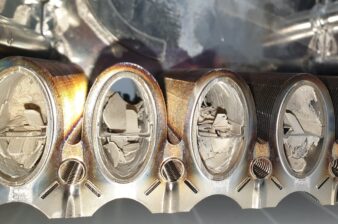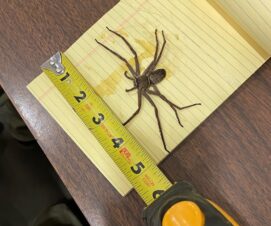With the increase in smart technologies and IoT, modernity seems to be an era of limitless innovation.
While many commercial utility operators are searching for reliable and secure ways to optimize technology in their properties, they often wonder how to fully trust new smart communication solutions.
Since certain applications are tailored to either wired or wireless technologies, it comes down to choosing the right one. Let’s take a deeper look at both wired and wireless applications for smart IoT technology in commercial properties.

1. Reliability
Wired: Cables are used. Network devices are connected at all times and do not interfere with other connected devices.
Wireless: No cables are used. Networks connect within a certain range and are visible to other networks and connected devices, which can compromise the reliability of any connection.
2. Speed
Wired: Transfer speeds do not rely on location or capability of configuration in relation to a network. Speed of data transmission heightens with a wired connection. Less mobility provided.
Wireless: Transfer speeds vary and rely on location as well as capability of configuration. The farther you are from a wireless device, the slower the speed may be. In this case, sometimes a hybrid solution is presented that brings both wired and wireless technologies into a building.
We all know wireless routers can lose connection and go offline, but it doesn’t mean this connection is integral to operations. A wireless connection will not necessarily change the operation of equipment but can interfere with data transfers.
3. Security
Wired: Real-time flow of information is transmitted through wires and cannot be easily intercepted. Well protected from unauthorized access.
Wireless: A real-time flow of information is transferred via radio wave. Can easily be intercepted if encryption technologies are not used, but when properly secured, wireless networks are relatively safe.
Let’s say a 30 minute period of downtime took place in your building and routers needed to be rebooted. If any major event were to happen during this 30 minute period of downtime, data transfers may get lost and wireless applications related to safety or security would be inadequate.

4. Set up and Interference
Wired: Can be difficult and expensive to set up. One wired network will not affect the other. With LAN (ethernet) or WAN connection, wifi is not needed.
Wireless: Can be difficult and expensive to set up. More equipment may be needed to provide connectivity (wireless routers, access points, adapters). Wifi, WLAN, WPAN (bluetooth) or cellular data is needed for connection.
To summarize — if you fit the profile of a property manager looking to implement smart IoT management technology into your building, choosing between wired and wireless applications can clearly be difficult.
It’s often assumed wireless technology is a more innovative and tech-savvy option than wired technology — but it really does come down to the type of applications used in your property and if you can afford the risk of downtime.
If you are concerned about cost or maximum security and aren’t necessarily looking for mobility, a wired connection can serve your needs. On the other hand, if you are not concerned about cost and prefer mobility in your applications, then a wireless connection is the way to go.
Major events happen way too often in commercial buildings, so it’s important to be preemptive and protect your assets, wired or not. How will you optimize technology in your property in the era of innovation?
Visit our website for more information www.reedwater.io
 Adam Bartman, is a second generation plumber from Toronto, Canada. He began his career working alongside his father every summer from age 14-18. After highschool, he enrolled in the HVAC technician program at George Brown College and near the end of the course, his father opened a new plumbing company utilizing his 30+ years in the commercial market. Adam worked for the plumbing company and in 13 years went from one truck to 15, along with completing and obtaining his Journeyman Plumbing Licence & red-seal designation.
Adam Bartman, is a second generation plumber from Toronto, Canada. He began his career working alongside his father every summer from age 14-18. After highschool, he enrolled in the HVAC technician program at George Brown College and near the end of the course, his father opened a new plumbing company utilizing his 30+ years in the commercial market. Adam worked for the plumbing company and in 13 years went from one truck to 15, along with completing and obtaining his Journeyman Plumbing Licence & red-seal designation.
Two years ago, faced with many clients experiencing water related issues such as leaks and floods, high water use and inability to control water shut-offs throughout commercial buildings, Adam teamed up with an old friend, Avi Yurman, to develop and create a software/hardware based technology to mitigate the damages suffered in about 300+ commercial properties they served. They spent about 1-year in development and another year selling their new commercialized product, and have seen continued growth in 2019.




Join the conversation: